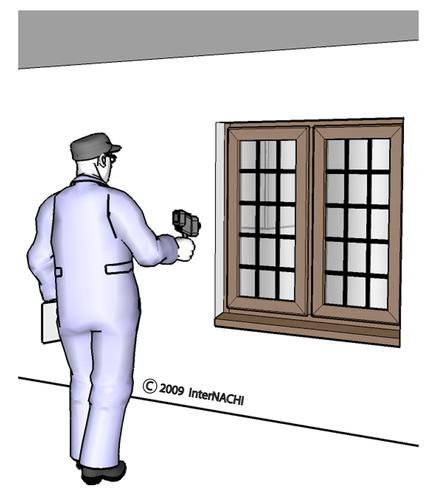Thermal Imaging Reports
 Infrared (thermal imaging) is an advanced, non-invasive technology that allows the inspector to show clients things about their homes or buildings that can’t be revealed using conventional inspection methods. Ancillary inspection reports are just as important as the reports generated for standard inspections. For something as specialized as a thermal imaging inspection, it’s critical that the information presented meets the clients’ needs for information they can use and act on.
Infrared (thermal imaging) is an advanced, non-invasive technology that allows the inspector to show clients things about their homes or buildings that can’t be revealed using conventional inspection methods. Ancillary inspection reports are just as important as the reports generated for standard inspections. For something as specialized as a thermal imaging inspection, it’s critical that the information presented meets the clients’ needs for information they can use and act on.The art of an IR inspection is to interpret the results as accurately and reasonably as possible such that the client is given actionable information in order to proceed with necessary repairs.
An Inspector should:
- Explain the limitations of thermal imaging, including the fact that, as with any type of inspection, it can’t predict future conditions. However, a roof that is experiencing moisture intrusion which has been detected through thermal imaging will very likely lead to serious structural issues, if left unaddressed.
- Explain the capabilities of thermal imaging and how it can benefit clients.
An infrared inspection can identify and document moisture intrusion, energy loss, and even unexpected hot spots.
In terms of energy loss, an IR camera can detect:
- heat loss and air infiltration in walls, ceilings, floors, windows and
doors;
- damaged and/or malfunctioning radiant heating systems;
- air-conditioner compressor leaks;
- under-fastening and/or missing framing members, and other structural defects that can lead to energy loss; and
- broken seals in double-paned windows.
In terms of detecting moisture intrusion, an IR camera can locate:
- plumbing leaks;
- hidden roof leaks before they cause serious damage;
- missing, damaged and/or wet insulation; and
- water and moisture intrusion around penetrations and at the foundation and building envelope that could lead to structural damage and mold.
IR cameras are equally effective at locating hot spots in the home, including:
- circuit breakers in need of immediate replacement;
- overloaded and undersized circuits;
- overheated electrical equipment and components; and
- electrical faults before they cause a fire.
Additionally, based on the color gradients that thermal images provide, an inspector can locate:
- possible pest infestation, as revealed by energy loss through shelter tubes left by boring wood-destroying insects;
- the presence of intruders, such as rats, mice and other larger pests hiding within the structure and detected because of their heat signature that the IR camera captures; and
- dangerous flue leaks, which can lead to carbon monoxide poisoning of the home’s residents.
Standard Images with Infrared Images
The report is user-friendly. The Inspector provides standard digital images side by side with your IR images. This gives clients an accurate point of reference for the IR data, which is essential for mapping out improvements and repairs.


Interpreting the Data
This is perhaps the most critical aspect of providing a solid IR report, and goes hand in hand with the limitations of thermal imaging, as well as the depth of training and experience. Depending on the established baseline IR readings and the locations of the images, the results can either alert the client to a critical repair needed – such as an electrical hot spot – or simply be an item that they need to keep in check – such as adding insulation at an exterior wall.
 Thermal imaging equipment is expensive enough that not every inspector offers this type of ancillary inspection. Nevertheless, those who use IR cameras for both ancillary inspections and as part of their standard home and commercial property inspections will testify that it’s become one of the more indispensable implements in their toolkits.
Thermal imaging equipment is expensive enough that not every inspector offers this type of ancillary inspection. Nevertheless, those who use IR cameras for both ancillary inspections and as part of their standard home and commercial property inspections will testify that it’s become one of the more indispensable implements in their toolkits.
